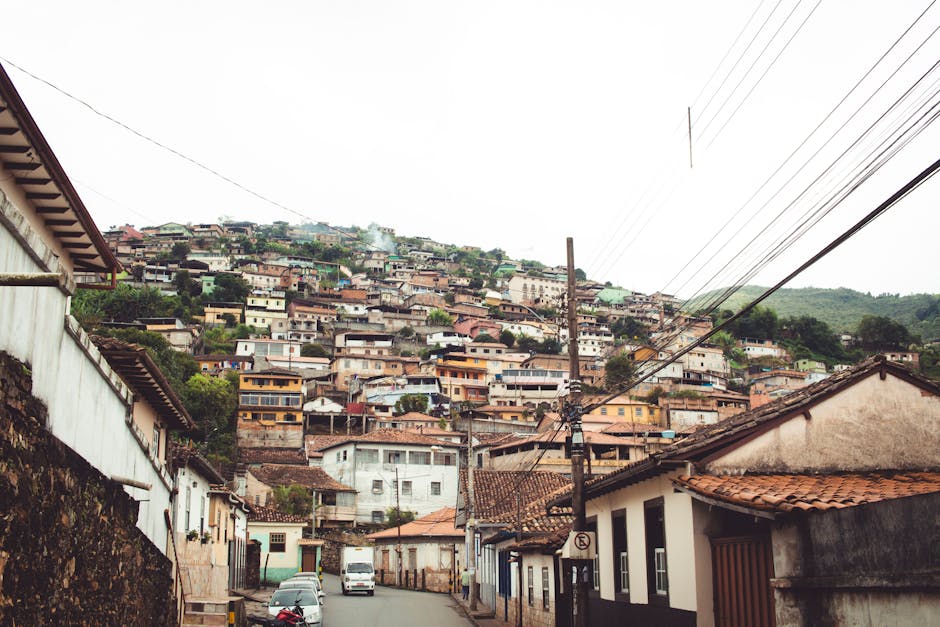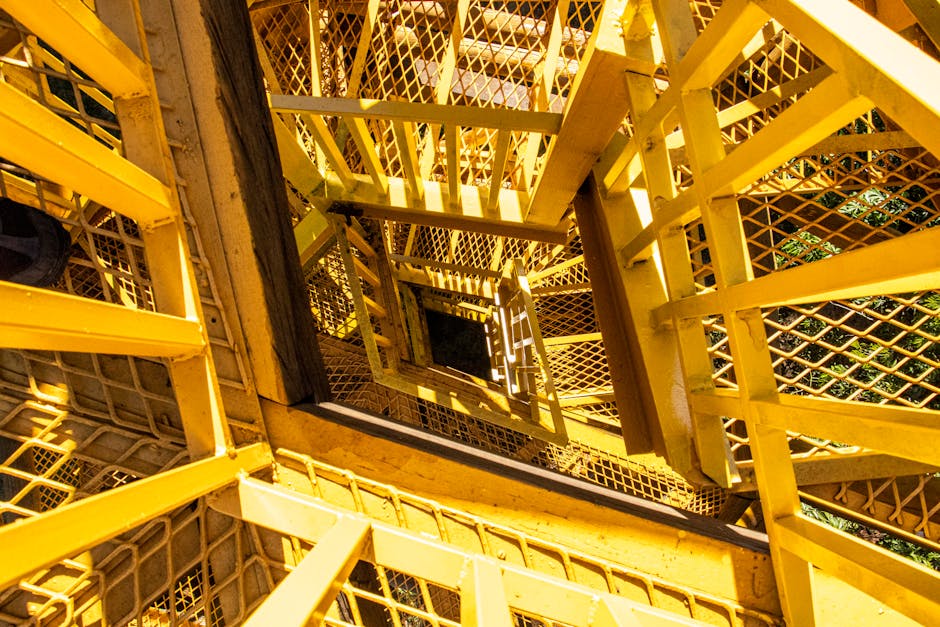Step Back in Time: Discovering Brazil’s Colonial Heart
Imagine wandering down a steep, winding street, where every cobblestone under your feet seems to whisper tales of gold, revolution, and artistry. Sunlight glints off the ornate facades of Baroque churches perched on rolling green hills. This isn’t a movie set; it’s the living, breathing history of Colonial Brazil. Forget what you think you know about Brazil’s beaches and festivals for a moment, and let’s take a journey back in time to the places where the country’s soul was forged: the incredible colonial towns of Ouro Preto, Paraty, and the hidden gems that lie beyond.
For centuries, these towns were the epicenters of unimaginable wealth and profound cultural change. The Portuguese crown, fueled by a thirst for gold and diamonds, established a network of mining towns and port cities that have been remarkably preserved. Today, visiting them feels like stepping through a portal. It’s a trip filled with stunning architecture, compelling stories, and a chance to connect with a different, deeper side of Brazil.
Ouro Preto: The Gilded Heart of the Gold Rush
Nestled in the mountains of Minas Gerais, Ouro Preto (which translates to “Black Gold”) is the crown jewel of colonial Brazil. In the 18th century, this was the heart of the brazilian gold rush, a place of immense wealth, intellectual ferment, and artistic genius. The city’s dramatic landscape is part of its charm; it’s built on a series of ridiculously steep hills, so every turn reveals a new, breathtaking panorama of red-tiled roofs and church towers against a mountainous backdrop.
Walking here is an experience in itself. Be prepared for a workout, but trust me, it’s worth it. The main square, Praça Tiradentes, is the perfect starting point. It’s named after the national hero who led an early independence movement, the Inconfidência Mineira, right here in these streets. The square is flanked by the impressive Museu da Inconfidência and the former Governor’s Palace, giving you a real sense of the city’s historical importance.
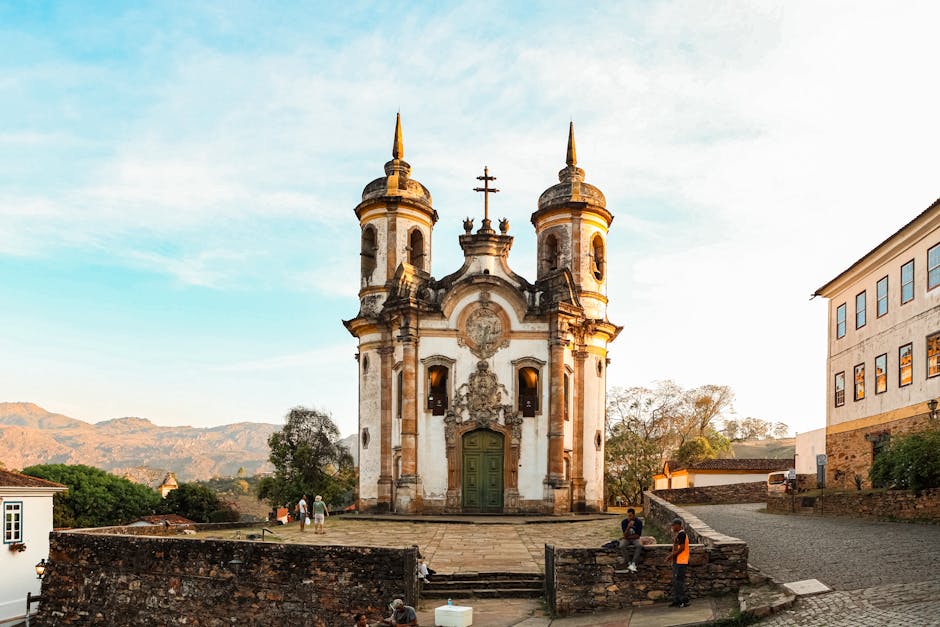
Churches Dripping in Gold
You can’t talk about Ouro Preto without mentioning its churches. There are over twenty of them, each one seemingly more lavish than the last. The interiors are a spectacle of Brazilian Baroque, a style characterized by dramatic, ornate, and emotional designs. Two standouts you absolutely must visit are:
- Igreja de São Francisco de Assis: Often considered the masterpiece of the great colonial artist Aleijadinho, this church is a symphony of soapstone carvings on the outside and a breathtaking, gold-leaf-covered wonder on the inside. The ceiling, painted by Mestre Ataíde, is simply unforgettable.
- Matriz de Nossa Senhora do Pilar: This church is said to contain over 400 kilograms of gold and silver. Walking inside feels like stepping into a treasure chest. The sheer opulence is a testament to the staggering wealth that was extracted from the surrounding mines.
A quick tip: hire a local guide for at least half a day. Their stories bring the cold stone and gold leaf to life, connecting the art and architecture to the people who built this incredible city.
Paraty: Where the Gold Met the Sea
After the dizzying heights and rich history of Ouro Preto, let’s head to the coast. Picture a perfectly preserved port town nestled between lush, jungle-covered mountains and a calm, emerald-green bay. Welcome to Paraty. This was the end point of the legendary caminho do ouro (Gold Trail), the port from which Brazil’s riches were shipped off to Portugal.
The historic center (Centro Histórico) is a UNESCO World Heritage site, and for good reason. It’s a pedestrian-only grid of oversized, uneven cobblestone streets lined with whitewashed buildings, their doors and windows framed in vibrant blues, yellows, and greens. The charm is immediate and all-encompassing.
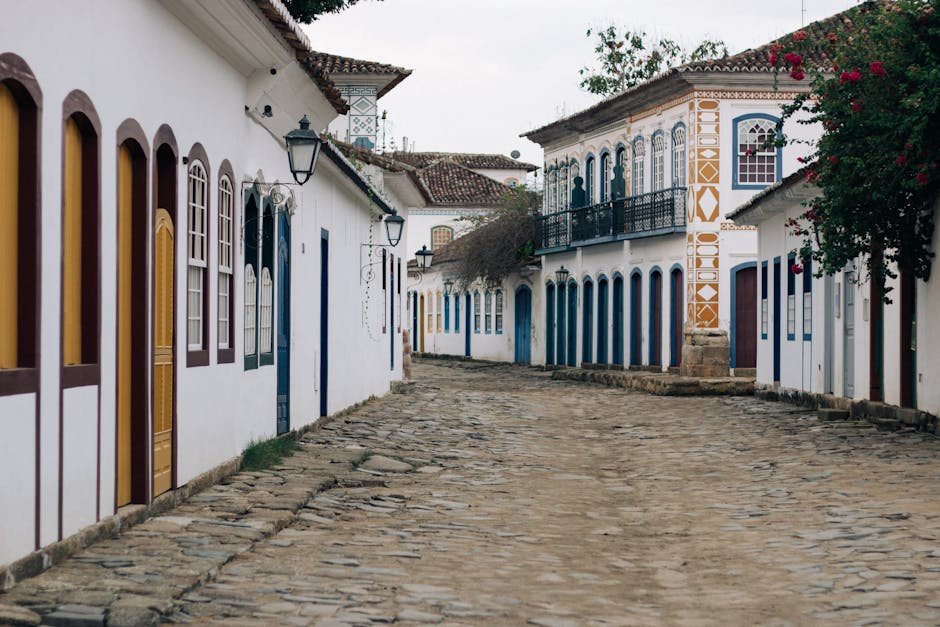
The Rhythms of the Tide and Cachaça
Paraty has a unique feature that sets it apart: some of its streets were designed to be flooded by the high tide, a clever, old-world system for cleaning the town. Watching the water creep up the cobblestones at high tide is a magical sight, creating stunning reflections of the colonial architecture.
Beyond its beautiful streets, Paraty offers a different kind of adventure. Its bay is dotted with dozens of islands and secluded beaches, best explored on a traditional schooner boat trip. You can spend a day swimming in crystal-clear water, snorkeling, and enjoying lunch on board. Paraty is also famous for its cachaça, the sugarcane spirit that is the heart of Brazil’s national cocktail, the caipirinha. Be sure to visit a local alambique (distillery) in the hills outside of town to learn about the production process and, of course, sample the goods.
Beyond the Big Two: Other Colonial Treasures
While Ouro Preto and Paraty are the headliners, the story of Colonial Brazil doesn’t end there. If you have more time, these other towns offer their own unique flavor of history and charm.
Tiradentes & Mariana
Close to Ouro Preto, Tiradentes is a smaller, more tranquil colonial town with a burgeoning culinary scene and a wonderful collection of artisan shops. It’s incredibly picturesque, with a beautiful central church (Igreja Matriz de Santo Antônio) offering fantastic views. Mariana, Ouro Preto’s historic rival and the first capital of Minas Gerais, is just a short trip away. Its Praça Minas Gerais, with two stunning churches facing each other, is a sight to behold.
Salvador de Bahia: The First Capital
For a different vibe, head north to Salvador, Brazil’s first colonial capital. Here, the Portuguese influence mixes with a powerful and vibrant Afro-Brazilian culture. The historic center, the Pelourinho, is a labyrinth of pastel-colored colonial buildings, lively squares, and churches that rival Ouro Preto’s in their grandeur. You can feel the energy of capoeira, smell the dendê oil of Bahian cuisine, and hear the rhythms of Olodum drums echoing through the streets. It’s a completely different, but equally essential, piece of the colonial puzzle.
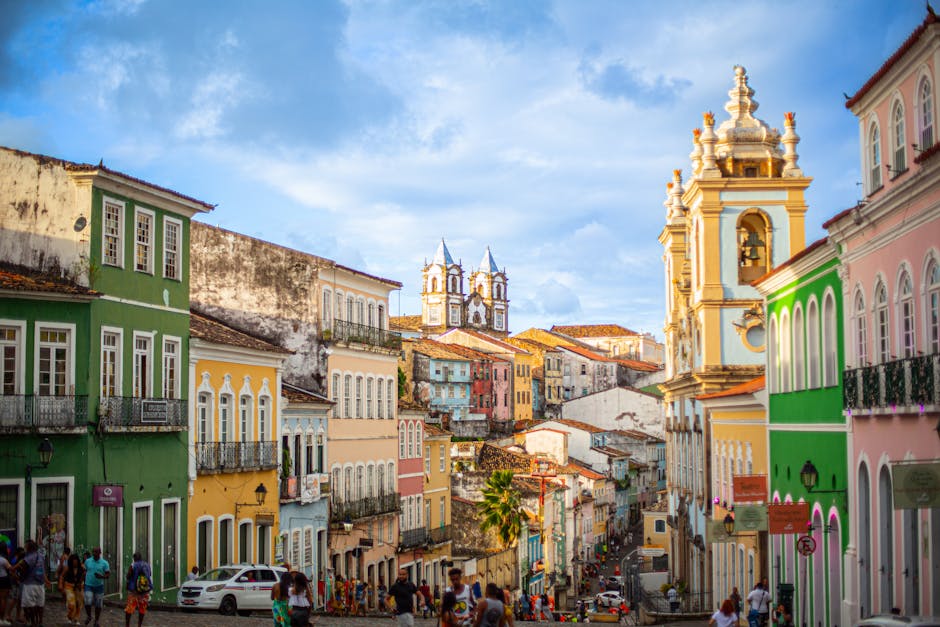
Planning Your Colonial Brazil Adventure
Ready to pack your bags? Here are a few practical tips to help you plan the perfect trip through Brazil’s historic heartland.
- Best Time to Go: The dry season, from April to September, is ideal for visiting Ouro Preto and the other Minas Gerais towns, with sunny days and cool nights. Paraty is lovely year-round, but this period also sees less rain on the coast.
- Getting Around: Renting a car offers the most flexibility for exploring the smaller towns in Minas Gerais. However, comfortable long-distance buses connect all these major destinations reliably. Once in the historic centers of Ouro Preto and Paraty, your own two feet are your best mode of transport.
- What to Pack: The single most important item is a pair of sturdy, comfortable walking shoes. The cobblestones are no joke! Pack layers for Minas Gerais, as the evenings can get chilly. For Paraty, bring swimwear, light clothing, and insect repellent.
- Savor the Flavors: Don’t miss the regional cuisine! In Minas Gerais, indulge in pão de queijo (cheese bread), feijão tropeiro (a hearty bean and sausage dish), and tutu de feijão. In Paraty, feast on fresh seafood moqueca and sip on world-class cachaça.
A trip through Colonial Brazil is more than just sightseeing; it’s an immersion. It’s about feeling the weight of history in the air, admiring the resilience of culture, and understanding the complex, beautiful origins of this incredible country. From the gold-laden churches of the mountains to the tranquil green waters of the coast, you’ll find a story around every corner, just waiting to be discovered.

